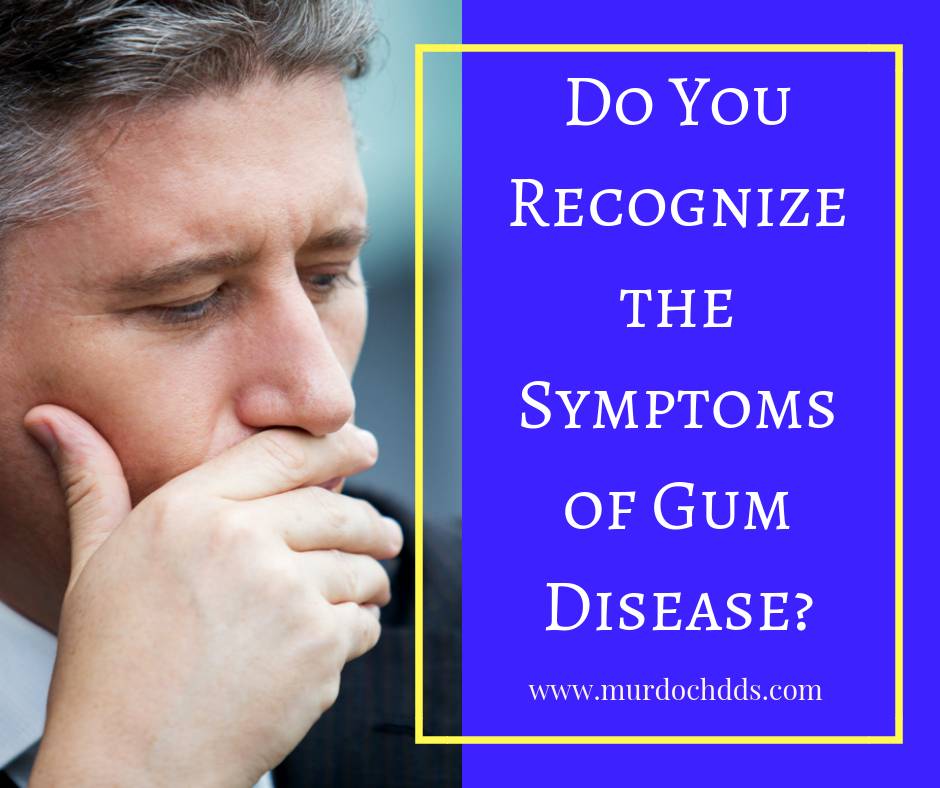Do You Recognize the Symptoms of Gum Disease?

How much do you know about periodontal disease, or gum disease, and what it looks like in the early stages? For something that affects approximately half of all American adults at one time or another, many of us don’t really understand what to look for when it comes to early detection.
Gum disease, the inflammation and infection of gum tissue in your mouth, can happen where tartar and plaque have built up on your teeth and allowed bacteria to take hold. When it comes to halting gum disease in its tracks, prevention is your best defense. Practicing good oral hygiene habits—daily brushing and flossing, and regular checkups and cleanings at the dentist—is the best way to keep gum disease from taking root.
But if periodontal disease does develop, it’s crucial to catch it in the initial stages, when it’s still relatively easy (and inexpensive) to treat. This means that recognizing the symptoms of gum disease is incredibly important.
The earliest stage of gum disease is called gingivitis—the inflammation of the gums. Symptoms associated with this stage are bleeding gums when brushing and flossing, unpleasant breath, redness of the gum tissue, and tenderness. When gum disease is caught in this early stage, it is reversible. Your dentist or hygienist can treat the disease by removing built-up plaque and tartar from the surface of the teeth.
If gingivitis remains untreated, the bacterial infection will progress into the advanced stage of gum disease—periodontitis. This stage is especially destructive, damaging teeth, gums, and the bones that support your teeth. Gum tissue attachments recede, leaving pockets between the teeth and the gums, which make it more difficult to clean your mouth thoroughly. This causes the disease to progress rapidly. Eventually, the bones of the jaw are affected and teeth can become loose. During this stage, symptoms can also include loose teeth, receding gum line, new spaces opening between the teeth, and a change in bite alignment when you chew.
One of the best ways to prevent gum disease from developing is to maintain regular check-ups with your dentist. During routine check-ups, your dentist will carefully scan your mouth for any signs of developing disease, and can address them right away.
To learn more, visit https://murdochdds.com/. Dr. Richard A. Murdoch helps his patients in Centennial and Glendale, Colorado, to keep happy, healthy smiles.
November 15, 2018
